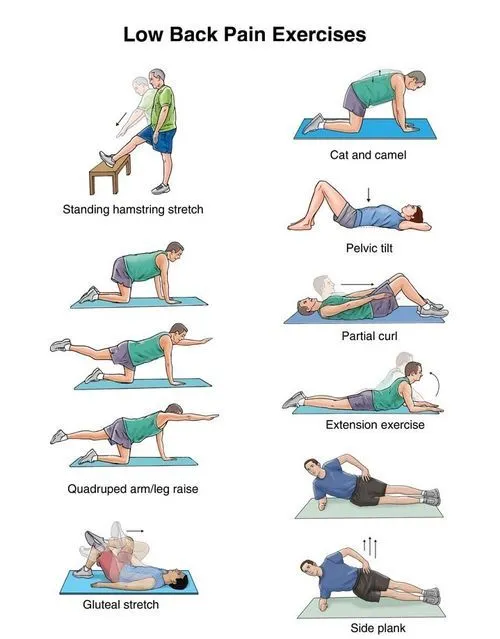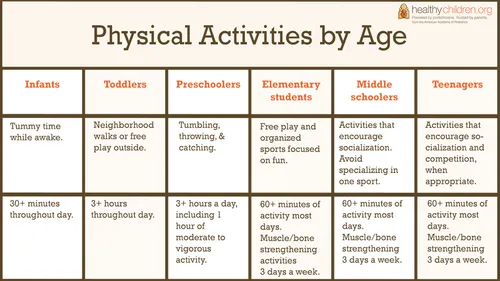
Are you looking to improve your physical well-being and overall quality of life? Incorporating rehabilitation exercises into your daily routine can be a game-changer. Whether you are recovering from an injury, managing a chronic condition, or simply aiming to enhance your fitness level, rehabilitation exercises offer a wide range of benefits. From enhancing strength and flexibility to boosting mental and emotional well-being, these exercises can help you regain control of your health and happiness. In this blog, we will explore the different types of rehabilitation exercises, how to incorporate them into your daily routine, and the challenges and solutions you may encounter along the way. We will also discuss how to measure progress, set realistic goals, and ensure safety while engaging in these exercises. Additionally, we will delve into the potential of incorporating rehabilitation exercises into workplace wellness programs and adopting a holistic approach to rehabilitation through exercise and lifestyle changes. Get ready to discover the power of rehabilitation exercises and take the first step towards a healthier, more vibrant you.

rehabilitation exercises offer numerous physical benefits, such as improving strength, flexibility, and endurance. These exercises help in rebuilding and strengthening muscles that may have weakened due to injury or illness. Additionally, they can aid in enhancing balance and coordination, reducing the risk of falls. Overall, rehabilitation exercises contribute to overall physical well-being and functional independence.
In addition to the physical advantages, engaging in rehabilitation exercises can also lead to mental benefits. Regular participation in these exercises can boost self-confidence by achieving personal fitness goals and overcoming physical challenges. Furthermore, it promotes a sense of accomplishment and empowerment as individuals make progress through their rehabilitation journey.
Emotionally, incorporating rehabilitation exercises into your daily routine can provide a positive outlet for stress relief and relaxation. It offers an opportunity for individuals to focus on their recovery while engaging in activities that promote mental wellness. The social aspect of participating in group therapy sessions or exercising with a support system can also contribute to emotional well-being.
Strength exercises are crucial for rehabilitation as they help to build muscle mass and improve overall physical strength. These exercises often involve using resistance bands, weights, or body weights to target specific muscle groups. Some common examples include squats, lunges, push-ups, and leg lifts.
Flexibility exercises focus on improving the range of motion in joints and muscles. These can include stretching exercises such as yoga or Pilates, as well as specific stretches targeting problem areas. By incorporating flexibility exercises into a daily routine, individuals can reduce the risk of injury and improve mobility.
Balance and coordination exercises are essential for regaining stability and preventing falls, especially for those recovering from injuries or surgery. These exercises often involve standing on one leg, walking heel-to-toe in a straight line, or using balance boards to challenge proprioception. By practising these types of exercises regularly, individuals can enhance their spatial awareness and overall balance.

Creating a schedule for your rehabilitation exercises is essential to ensure consistency and progress. By setting aside specific times each day for your workouts, you can establish a routine that becomes an integral part of your daily life. Whether it's in the morning before work or in the evening after dinner, finding a time that works best for you will help make rehabilitation exercises a regular habit.
Making your rehabilitation exercises fun and enjoyable can help keep you motivated and engaged. Consider incorporating activities that you enjoy, such as listening to music, watching TV shows or movies, or even taking your workout outdoors if possible. Additionally, grouping exercises with similar movements together or pairing them with activities you like can make the experience more enjoyable and less daunting.
Seeking professional guidance from a physical therapist or healthcare provider is crucial when incorporating rehabilitation exercises into your daily routine. They can provide personalized recommendations based on your specific needs and monitor your progress over time. Professional guidance also ensures that you are performing the exercises correctly and safely, reducing the risk of injury and maximizing their effectiveness.

For individuals suffering from back pain, rehabilitation exercises can play a crucial role in relieving discomfort and improving overall strength and flexibility. These exercises may include gentle stretching, low-impact aerobic activities, and core-strengthening movements to support the spine. It's important to work with a healthcare professional to develop a personalized exercise plan that targets the specific areas of concern.
Joint injuries often require targeted rehabilitation exercises to promote healing and prevent further damage. Depending on the type and severity of the injury, exercises may focus on range of motion, strengthening surrounding muscles, or improving balance and stability. Following a proper rehabilitation program can aid in restoring joint function and reducing pain over time.
After undergoing surgery, engaging in post-surgery recovery exercises is vital for regaining strength, mobility, and functionality. Whether it's knee replacement surgery or shoulder arthroscopy, physical therapy exercises tailored to the individual's needs are essential for facilitating optimal recovery outcomes. By adhering to prescribed rehab exercises, patients can enhance their recovery process and minimize potential complications.
Lack of motivation can be a significant barrier to incorporating rehabilitation exercises into your daily routine. It may be challenging to stay committed, especially when progress seems slow or the exercises are uncomfortable. To address this, setting specific, achievable goals can help maintain motivation. Additionally, finding an exercise buddy or joining a support group can provide encouragement and accountability.
Time constraints are another common challenge when it comes to rehabilitation exercises. Finding time in a busy schedule for physical therapy exercises may seem daunting, but integrating them into daily activities can help overcome this obstacle. For example, performing stretching or strengthening exercises while watching TV or during work breaks can make it easier to fit them into the day.
Overcoming physical limitations is also a crucial aspect of implementing rehabilitation exercises. Individuals with mobility issues or chronic pain may struggle to engage in traditional forms of exercise. In these cases, exploring adaptive equipment and modified workout routines tailored to individual needs can make it possible to participate in rehabilitation exercises effectively.
Tracking your progress is essential in rehabilitation. By measuring improvements in strength, flexibility, and endurance over time, you can determine the effectiveness of your rehabilitation exercises. Keep a journal or use an app to record your achievements and setbacks, allowing you to see tangible evidence of your hard work.
It's crucial to consult with healthcare professionals such as physical therapists or doctors when setting realistic goals for your rehabilitation. They can provide valuable insights into what is achievable given your circumstances and contribute professional expertise in tailoring a plan that suits your needs. Additionally, they can help adjust goals based on changes in recovery progress or any complications that may arise.
Setting realistic goals is key to maintaining motivation during rehabilitation. Start with manageable targets that gradually become more challenging as you progress. This approach not only prevents frustration but also fosters a sense of achievement as you reach each milestone. Regularly reviewing and adjusting these goals will ensure they remain both feasible and beneficial for ongoing improvement.
It is crucial to always begin your rehabilitation exercises with a proper warm-up routine. This can include light cardiovascular activities such as walking or cycling to increase blood flow to the muscles and prepare them for more intense movements. Similarly, it is important to cool down after your workout with gentle stretching exercises. This will help prevent muscle stiffness and reduce the risk of injury.
When performing rehabilitation exercises, it is essential to pay close attention to your form and technique. Using correct posture and alignment can help target the intended muscles effectively while minimizing strain on other parts of the body. If you are unsure about the proper form for a particular exercise, consider consulting a physical therapist or fitness professional for guidance.
Lastly, it is important not to push yourself too hard during rehabilitation workouts. Overexertion can lead to muscle fatigue and potential injury, ultimately hindering your progress rather than promoting it. Listen to your body's signals, take breaks when needed, and gradually increase the intensity of your exercises over time as advised by your healthcare provider.
Educating employees about the importance of rehabilitation exercises in maintaining physical health and preventing injuries is crucial for successful incorporation into workplace wellness programs. Providing information about the benefits of these exercises, such as reduced risk of musculoskeletal disorders and improved overall fitness, can motivate employees to participate.
Offering accessible resources for rehabilitation exercises is essential for encouraging participation among employees. This could include providing on-site fitness facilities, offering flexible work schedules to accommodate exercise routines, or organizing group workout sessions led by certified trainers. By making it easy for employees to access these resources, employers can promote a culture of proactive health management within the workplace.
Encouraging participation through incentives and recognition can further enhance employee engagement with rehabilitation exercises. Employers can implement reward programs for consistent participation in rehab workouts or publicly recognize individuals who demonstrate commitment to their physical well-being. Creating a supportive environment that values and promotes regular exercise as part of daily work life will ultimately lead to healthier, happier, and more productive employees.
Incorporating rehabilitation exercises into your daily routine is just one aspect of a holistic approach to rehabilitation. It's important to also consider nutritional factors, as a balanced diet can support the body's healing process and overall well-being. Stress management techniques are another crucial element, as chronic stress can hinder the body's ability to heal. Finding ways to reduce stress, such as meditation or deep breathing exercises, can complement the physical benefits of rehabilitation exercises.
Sleep and recovery strategies play a significant role in the body's ability to repair itself. Quality sleep allows the body time for rest and restoration, which is essential for recovering from injuries or illness. Additionally, incorporating lifestyle changes that promote better sleep quality - such as creating a calming bedtime routine or eliminating screen time before bed - can further enhance the benefits of rehabilitation exercises. By addressing nutritional considerations, stress management techniques, and sleep and recovery strategies alongside exercise, individuals can take a more comprehensive approach to their rehabilitation journey.
A holistic approach acknowledges that rehabilitation is not solely about physical therapy exercises or rehab workouts; it encompasses all aspects of an individual's life. By paying attention to these various factors and making necessary lifestyle adjustments in addition to engaging in regular rehabilitation exercises, individuals may experience improved outcomes throughout their recovery process.
At Prime Chiro, we understand the importance of finding the best chiropractor near you in Lansvale NSW and the nearby areas of Fairfield, Liverpool, and Cabramatta. Our team of experienced chiropractors is dedicated to providing top-notch care and consultation to individuals seeking relief from pain and discomfort. Whether you are dealing with back pain, neck pain, headaches, or other musculoskeletal issues, we offer personalized treatment plans to address your specific needs. Contact Prime Chiro today to schedule a consultation and take the first step towards a healthier, pain-free life.
Rehabilitation exercises are specific movements and activities designed to help individuals recover from injuries, surgeries, or medical conditions. These exercises aim to improve strength, flexibility, balance, and overall function.
Incorporating rehabilitation exercises into your daily routine can help speed up the recovery process, prevent further injuries, and improve your overall physical well-being. These exercises can also help restore mobility, reduce pain, and enhance your quality of life.
The frequency of performing rehabilitation exercises depends on various factors, including the type and severity of your condition, as well as the recommendations of your healthcare provider or physical therapist. Generally, it is recommended to perform these exercises at least a few times a week, if not daily, for optimal results.
Yes, many rehabilitation exercises can be done at home with minimal equipment. However, it is important to consult with a healthcare professional or physical therapist to ensure you are performing the exercises correctly and safely. They can also provide you with a personalized exercise plan based on your specific needs and goals.
No, rehabilitation exercises are not only for people with injuries. These exercises can also be beneficial for individuals looking to improve their overall physical fitness, prevent injuries, or manage chronic conditions. They can help enhance strength, flexibility, and mobility, regardless of whether you have a specific injury or medical condition.
Incorporating rehabilitation exercises into your daily routine can bring physical, mental, and emotional benefits. By including strength, flexibility, and balance exercises, and creating a schedule that makes it enjoyable, you can overcome challenges and measure progress. Seek professional guidance, take safety precautions, and adjust goals as needed. Consider incorporating rehabilitation exercises into workplace wellness programs, and take a holistic approach to rehabilitation through exercise and lifestyle changes.